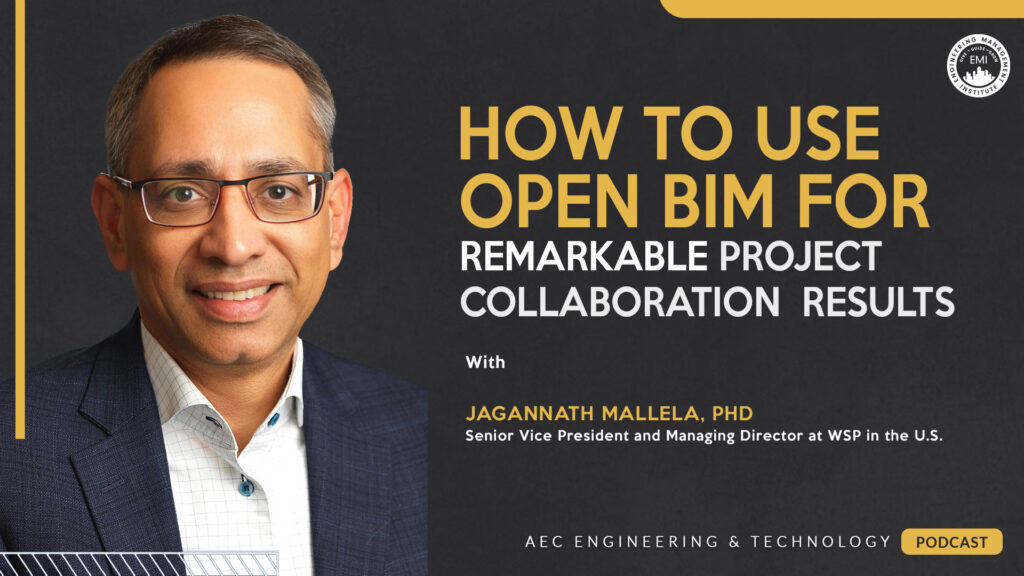In this episode, I talk with Jagannath Mallela, PhD, Senior Vice President and Managing Director at WSP in the U.S., about what makes Open BIM different, and how Open BIM is transforming collaboration, sustainability, and innovation in construction, and how AI is shaping its future through real-world infrastructure applications.
***The video version of this episode can be viewed here.***
Engineering Quotes:
Here Are Some of the Questions I Asked Jagannath:
- What exactly is Open BIM, and how is it different from the traditional BIM methods used in the AEC industry?
- How does Open BIM help different engineering teams work better together, and how does it improve data management and asset tracking over time?
- Can you give a real-world example of how Open BIM is being used to support sustainable design and construction?
- What are the biggest challenges AEC firms face when switching to Open BIM, and how can they make the transition smoother and more future-proof?
- How do you see artificial intelligence changing the future of BIM, and what effect will it have on project workflows and efficiency?
- What final piece of advice would you give AEC professionals looking to adopt Open BIM and digital innovation to achieve better project outcomes?
Here Are Some Key Points Discussed in This Episode About How To Use Open BIM for Remarkable Project Collaboration Results:
- Open BIM enables collaboration and data sharing across all project phases, unlike traditional BIM methods that rely heavily on closed, proprietary systems. It creates a more seamless information flow, breaking down barriers between teams and improving overall project efficiency.
- Open BIM introduces a shared digital language that helps teams coordinate more effectively from design to maintenance. By improving access to structured, consistent data, it enhances asset tracking and supports better decision-making across the asset’s full lifecycle.
- Across the U.S., agencies use Open BIM to uncover and share essential information, like subsurface utilities, to reduce risk during construction. These efforts are reshaping workflows and applying standardized data exchanges to support more sustainable and collaborative design practices.
- Transitioning to Open BIM requires overcoming legacy systems, cultural resistance, and the need for new tools. AEC firms can reduce risk by starting small, prioritizing training, engaging external partners early, and empowering internal leaders to guide the change.
- AI enhances BIM by automating repetitive tasks, improving accuracy, and optimizing workflows in real time. With reliable BIM data, AI helps engineering teams increase productivity, reduce errors, and shift focus toward higher-value work.
- Professionals benefit most by starting with small, strategic actions that create early value and build momentum. Open BIM adoption succeeds through consistent effort, patience, and a willingness to improve through experimentation over time.
More Details in This Episode…
About Jagannath Mallela, PhD

About the Host: Nick Heim, P.E.

Nick’s interests lie at the intersection between the built world and technology, and he can be found looking for the ever-changing answer to the question, “How can we do this better?” Nick can be found on LinkedIn, producing content about the use of technologies in his civil engineering career and small business.
Sources/References:
WSP in the US
Federal Highway Administration
BuildingSMART International
Caltrans
Pennsylvania DOT
Utah DOT
AASHTO
Connect with Jagannath Mallela, PhD, on LinkedIn
Please leave your comments, feedback, or questions in the section below.









